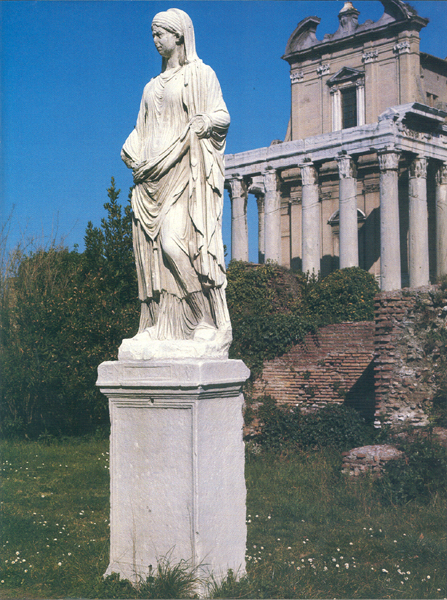
In the waning years of the first century A.D., one of the six Vestal virgins who guarded Rome’s sacred flame was accused of breaking her vow of chastity. Sentenced to death by the emperor Domitian (81–96 A.D.), she was dragged to an underground chamber just inside the city walls and buried alive. Her alleged lovers were hung upon forked sticks and beaten to death in the Forum.
Soon after the executions, the author and lawyer Pliny the Younger (61–112 A.D.) wrote to his friend Cornelius Minicianus that the accused Vestal, a senior priestess named Cornelia, was probably innocent (Epistle 4.11). She had been executed merely because the emperor wished to demonstrate his rigorous justice, however tyrannical. Punishing a Vestal signaled that he would maintain the purity and prosperity of Rome.
As Domitian’s use of Cornelia’s death shows, the Vestal virgins were much more than just a group of cloistered young priestesses. They were, in fact, key political players, who personally embodied the health and well-being of the Roman state. In their role as guardians of the city’s sacred flame, the Vestals enjoyed greater political influence (and endured harsher scrutiny) than any other group of women in the ancient world.
Already a library member? Log in here.
Institution user? Log in with your IP address.

